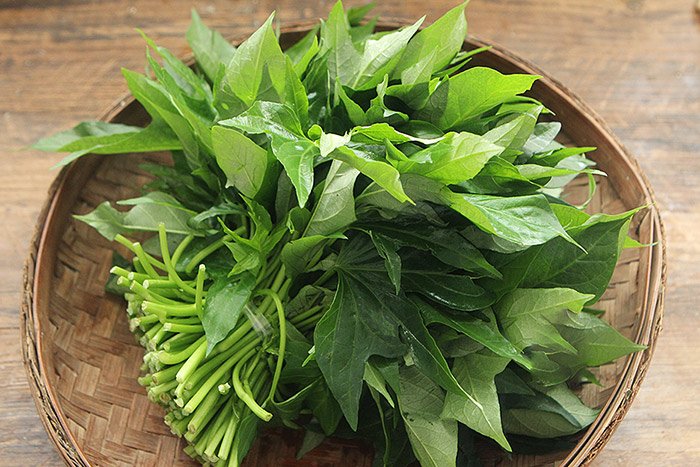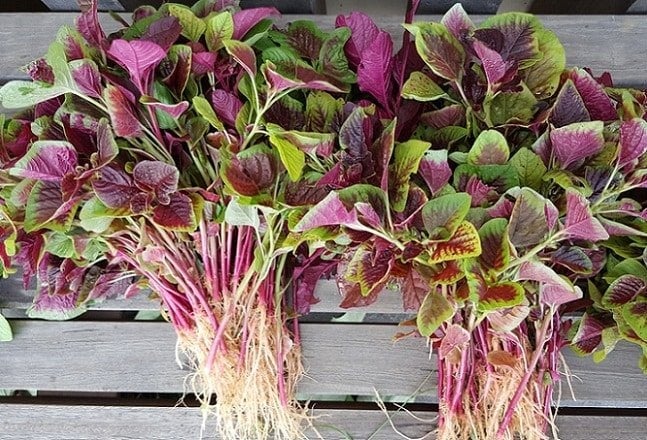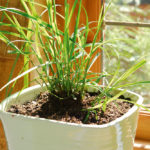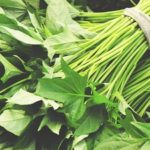Sweet potato leaves
Sweet potato leaves, commonly known as sweet potato greens, are a popular and familiar vegetable in many households’ daily meals. It is not only a rich source of food but also a treasure trove of many important nutrients and a diverse supply of vitamins.
According to studies, in 100g of sweet potato leaves, we can find the following nutrients: energy: 22kcal, water: 91.8g, protein: 2.6g, starch: 2.8g. In addition, sweet potato leaves also provide many vitamins such as vitamin B, C, E, beta carotene, biotin, and minerals such as magnesium, phosphorus, calcium, potassium, manganese, zinc, copper…

Amaranth leaves
Amaranth leaves, a popular vegetable in family cuisine, are famous for their title as “food for longevity” and are highly valued for their nutritional value compared to their cost.
Amaranth leaves have a high iron content, surpassing many other fresh vegetables, bringing a cool and sweet taste and providing essential nutrients for the body. Iron is an important factor in promoting hemoglobin production and red blood cells.

This turns amaranth leaves into an excellent choice for people with anemia. Regular consumption of amaranth leaves also helps stabilize blood sugar levels and improve type 2 diabetes. Amaranth leaves, especially in the summer, not only help cool the body but also have good detoxifying effects.
Furthermore, amaranth leaves contain many beneficial antioxidants. Animal studies have shown that the use of amaranth leaves can reduce overall cholesterol and LDL cholesterol while increasing HDL cholesterol. However, it should be noted that these benefits in humans have not been fully proven.
Chives
Chives are not only a common ingredient in cuisine but also known as a medicinal plant with the ability to treat many diseases. It is considered a powerful medicine with a distinctive flavor and called the “kidney herb” due to its nourishing and digestive-stimulating properties.
Chives not only contain many vitamins and rough fibers but also have anti-constipation and colorectal cancer prevention effects. In addition, it is known for its ability to dissolve blood stasis, stimulate blood circulation, and detoxify. Chives are often used in soup dishes, combined with shrimp, meat, or stir-fried with eggs.
According to traditional Chinese medicine, chives are considered a type of medicine. Fresh chives are warm in nature, becoming warm and spicy when cooked. It affects the Can, Vi, and Kidney meridians, with the effects of warming the middle, promoting qi circulation, resolving stagnation, and detoxification. It is often used to treat chest pain, hiccup, falls,…
The roots of chives are also warm and spicy in nature, with the effects of warming the middle, promoting qi circulation, and resolving stagnation. It is often used to treat chest and abdominal pain caused by food stagnation, summer-heat disorders, itching, etc. Chive seeds, with warm nature, sweet and spicy taste, act on the Can and Kidney meridians, are used to nourish the Can and Kidney, strengthen the yang, and secure essence. It is often used to treat frequent urination, nocturia, seminal emissions, and weak lower back and knees.
Amaranth
Amaranth, a common plant in temperate regions, especially growing wild in highland provinces such as Lao Cai, Cao Bang, Lang Son… Parts of this vegetable are often used as medicine, supporting the treatment of cardiovascular, urinary disorders, and bleeding issues.
Amaranth can be processed into various dishes, including soups, juices, stir-fries, or used as fillings for cakes.
3 Essential Steps for Cooking Stuffed Bitter Melon Soup for Tet – Enjoyed by Kids without Worrying about the Bitter Taste
For a deliciously non-bitter bitter melon soup this Tet holiday, follow these three easy steps: first, remove the seeds; second, soak the bitter melon in salt water; and third, cut and rub with lime. After completing these steps, simply stuff the melon with your desired meats and simmer and cook as usual.






































